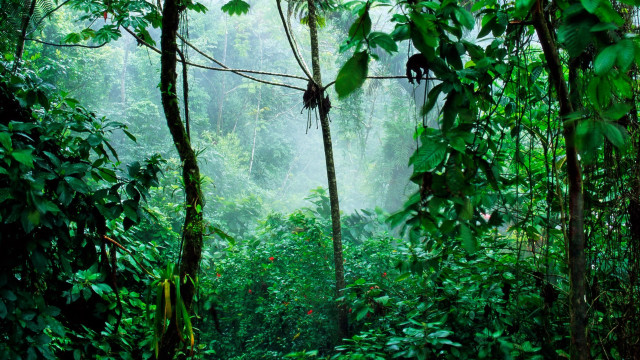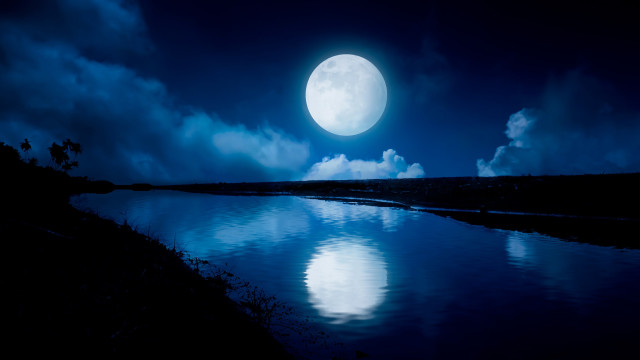Tap Into the Healing Energy of Nature

When was the last time you felt your toes digging into soft, moist soil? Or took time out to sit in nature and appreciate the colors, fragrances, and sense of comfort of being surrounded by trees? If you can’t remember, you need to get off your work desk right now and spend at least a few minutes in your personal garden or at a local park today.
When you spend time by yourself in nature, it lets you be truly present. Connecting with nature comes innately to us, and is an innate need. We do it since the time we’re born, without putting much thought into it — think back to all the sunrises and sunsets you’ve witnessed, the birds or animals you fed as a child, hikes along hilly trails, barefoot walks on sandy beaches, and all the times you’ve spent twilight stargazing. We carry these experiences with us throughout our lives, refreshing our senses, soothing our frayed nerves, and daydreaming at our desks to get away from the drudgery of daily life.
Our bodies are refreshed when we absorb sunlight and fresh air, and take in the sounds of nature. This ritual of spending time in nature is called forest bathing or shinrin-yoku in Japanese. It lets us recharge ourselves by exploring the stillness, and soaking in the peace and beauty of nature through all our senses.
This human-nature connection and its ability to refresh our spirit has been noted across centuries. In "Health, Sickness, Medicine and the Friars in the Thirteenth and Fourteenth Centuries," Angela Montford writes that gardens were prescribed for monasteries in the 1200s “not only for food, but also for recreation in the open air to aid the recovery of the sick and to preserve health and improve those fatigued by their spiritual studies.” New scientific research backs this prescription: Spending time in nature is more than a visual break, it has physical benefits — it can lower blood pressure, improve cognitive performance, and even reduce pain.
Here’s how you can make space in your life for the restorative energy of nature:
Let Your Breath Guide You
The next time you spend time in nature, tether yourself to the natural energy around you with your breath. As you sit in meditation, imagine the soil, the rocks, and feel the earth beneath you. Take a deep breath and let go of the conflicting thoughts that pull you in different directions. Listen, instead, to the natural symphony around you, the rustling of leaves, birdsong, the sound of the wind, and of your own breath. You can also focus on the smells of nature — fresh grass, wet earth, mountain air. A guided meditation uses your breath as a conduit to connect with nature.
Tune Into Nature’s Rhythms
Almost all cultures in the world mark sacred ceremonies, feasts, and rituals around nature’s rhythms. Being aware of the changes in seasons helps us understand our body’s own patterns — in fact, research shows that changes in our environment like light, temperature, humidity etc., bring about physiological changes in our bodies.
Another direct way to immerse yourself in the rhythm of the changing seasons is by taking care of your own backyard garden, or even a small herb garden grown in a few pots. By planting a seed and watching it grow, you learn to appreciate the nurturing influences of nature.
We can even take away lessons in growth from watching nature at work. The cycle of growth you see in the natural world — from a seed to a tree — can guide us mentally and emotionally. Draw a parallel with nature as you "plant the seeds of intention" and use calming breathing techniques to set clear intentions for your life. Other meditation techniques like moon meditations can help you appreciate and manifest your dreams on the lunar cycles.
Learn to Slow Down
Nature, through its myriad seasons, has a lot to offer for all our senses — the heady scent of soil and foliage during the monsoon or the fruity, sweet aroma that bursts forth when you stand in the shade of a mango tree in the summer. If we learn how to slow down, we can tap into this larger-than-life, beautiful, cosmic flow of energy. Watching a caterpillar break through its cocoon into its winged version or noticing how a sunbird builds its nest from scratch can teach us important life lessons in patience and consistency.
Nature Is More Than Just Us
We humans act as though we are the only sentient beings on the planet, the only species that functions within a social structure. Except when we look more closely at nature, we realize that social structures exist across species: lions live in prides; impalas in harems; elephants are led by a matriarch; albatrosses mate for life. Although we believe in our self-proclaimed supremacy, we are not, in fact, above nature, or even separate from it. To come to this realization, an understanding of wholistic wellbeing is important. The concept of wholistic wellbeing covers wellbeing across eight dimensions, including planetary wellbeing, which taps into the energies of nature and offers a more organic way to live.
It is important to spend time in nature to remember how we grow, not so differently from the trees — from seed to sapling to a young tree to a mature woodland. We are closely intertwined with nature and need to renew our connection with her whenever possible.




